Kingdom of Laurenberg
This article has multiple issues. Please help improve it or discuss these issues on the talk page.
|
Laurenberg, officially the Kingdom of Great Laurenberg and the Upper Ruma, is autonomous territorial entity which claims to be a sovereign state but is more commonly referred to as a micronation by external observers. Located in South Asia, it is landlocked almost completely within India. The Kingdom is unique in it's spirit— it provisions for the operation as an Absolute Monarchy as well as a Federal Elective Constitutional Monarchy, with the Emperor serving as the Monarch. The capital and the largest city is Laurenberg, which is the national administrative capital of the country. Upper Ruma is the national royal capital also called National Royal Capital Region (NRCR). Laurenberg has two official languages: English and Taiminyu, as well as four scheduled languages: Latin, Japanese, Chinese, Korean, Dzongkha. Taiminyu remains as the secondary official language, while Latin remains solely used by the Imperial Family of Laurenberg. The main administrative region of Laurenberg is it's 4 provinces, which is separated from the Crown Territory at Ruma. The nation has some overseas territories.
| Kingdom of Great Laurenberg and the Upper Ruma | |
|---|---|
| English | The Kingdom of Great Laurenberg and the the Upper Ruma |
| Taiminyu | Dai-Rourenbagei-no-Oyubi-no-Kami-no-Ruma-no-Teikoku |
| Latin | Regnum Magnae Laurenbergae et Rumae Superioris |
| Japanese | グレートローレンバーグ王国とアッパールマ |
| Traditional Chinese | 大勞倫堡王國和上魯瑪 |
| Korean | 그레이트 로렌베르크 왕국과 어퍼 루마 |
| Dzongkha | Srasgang Laureibrege he Luma Gyalpo |
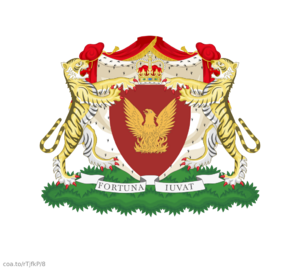

The Kingdom was a result of a long war between the once independent states of the region against Emperor Vulpus I. In 2018, the tide of the war moved in favor of the Laurens and the indigenous population was forced to flee in the neighboring states of Saxe-Lindenberg. The then monarch, Vulpus the First passed the throne to his son, the then Crown Prince Commelinus. Crown Prince Commelinus proclaimed the Second Imperial Era in October 2019 after some struggle against revolts from Saxe-Lindenberg. Finally, on July 18, 2022, his successor and the current Emperor Vulpus the Second proclaimed the Third Imperial Era and established the Kingdom of Great Laurenberg and the Upper Ruma. Currnetly, the state is a part of no micronation conglomerate.
2. Etymology
The name of the Kingdom originates purely as a work of personal creativity.
Official Names-
- 15 August 2017 - 16 December 2018: Duchy of Laurenberg
- 16 December 2018 - 4 March 2019: Grand Duchy of Laurenberg
- 4 March 2019 - 29 September 2019: Archduchy of Laurenberg
- 29 September 2019 - 20 March 2020: Archduchy of Laurenberg and Lower Ruma
- 20 March 2020 - 17 November 2020: Archduchy of Laurenberg-Ruma
- 17 November 2020 - 22 April 2021: Kingdom of Laurenberg and Ruma
- 22 April 2021 - 4 July 2022: Kingdom of Laurenberg, Upper and Lower Ruma
- 4 July - : Kingdom of Great Laurenberg and Upper Ruma
3. History
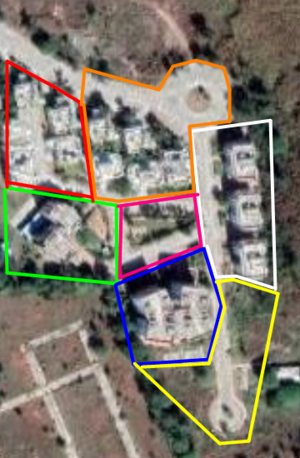
In May 2015 the the Royal Palace (enclosed in Green) and the Royal Gardens (enclosed in Pink) was completed. The then clan of Laurenberg rose to power in August 2017 and occupied the Royal Palace and the Royal Gardens that belonged to the Saxe-Lindenberg Kingdom. Following this outrageous act, the Saxeberg's sent a strong force of 8 to drive away the Laurenbergs. The Laurenbergs, with the indigenous population managed to drive away the attackers and established a boundary. It de facto captured the Legatio calusus (enclosed in Red), Camerarius(enclosed in Blue) and parts of Administrativi (enclosed in orange). The Saxerbergs retained control over the North of Administrativi, Rostrum Meridionale (enclosed in Yellow) and Civilibus (enclosed in white),
On 16 December, the unwary Laurenbergs were caught off guard by the Saxebergs who had formed an alliance with Lindenberg. The combined forces forced the Laurenbergs retreat to the Royal Palace Block, but couldn't manage to break in the fortress, after four days of siege. The Laurenbergs celebrated the defense by proclaiming the Grand Duchy of Laurenberg, with Vulpus the First still as the monarch. The second Imperial Era 'Taihei' (Taiminyu: Great Peace) was proclaimed.
On March 4, 2019, the Kingdom of Lindenberg broke down, thus breaking the Saxeberg-Lindenberg Pact. The Lindenberg crusaders returned home. The confused Saxebergs were routed by the Laurenberg Army on the evening of the same day. The Laurenbergs pushed the Saxebergs into Camerarius, Meridionale and Civilibus. Following the crushing of Saxebergs, they ceded the Slavart Island to the Laurenbergs. The Laurenbergs celebrated by proclaiming the Archduchy of Laurenberg on March 4, 2019 with Vulpus the First proclaiming the Second Imperial Era 'Zonten' (Taiminyu: Revere the Heavens).
On 12 September 2019, Vulpus the First committed suicide amidst disturbed interpersonal relationships with his family. He was cremated on 13 September. Following the untimely demise of the Monarch, the Archduchy darkened into chaos with two factions formed—those who were against the Crown Prince Commelinus' accession (ministers) and the supporters of Duke of Gnatha who supported the Crown Prince. On 18 September 2019, the Duke of Gnathus and his cohorts deposed the ministes and dissolved the court. They then declared that Commelinus would ascend the throne by the name of 'Emperor Commelinus the First' whipping the Third Imperial Era, 'Seiwa' (Taiminyu: Peace of the World). On ther other side, the Saxebergs celebrated the internal feuds between the Laurenbergs and proposed to plan a attack.
On 29 September 2019, Duke of Gnatha received intelligence about a potential Saxeberg attempt to disrupt the coronation and occupy the territory. he at once issued an order that the venue for the coronation ceremony was changed to the Fortress of Salovey, against the traditional Royal Palace; drawing a lot of controversies from his supporters and the Crown Prince. At 8:00 PM LST (4:00 IST), the Saxebergs dispatched a force of four mercenaries underestimating the preparations made by the Laurenbergs against them. The Saxebergs reached the Fortress of Salovey, planning to disrupt the coronation. Instead, one of the most advanced Fortress of it's time, the Fortress of Salovey fired upon the unwary attackers. The fortress' many boasted traps, boulders hurled from heights, projectiles of rocks, and sand pits ravaged the Saxebergs. In fact, the coronation took place at the Royal Palace, and it taking place in the Fortress was a rumor to attract the Saxebergs.
On 15 October 2020, the Laurenbergs captured a major portion of the Lower Ruma, meeting nearly zero resistance from the Saxebergs who were busy recovering from the earlier defeat. Archduchy of Laurenberg-Ruma was thus inaugrated.
On 16 November 2020, an argument broke into Emperor Commlinus and the Duke of Gnatha, over the former's refusal to reward a higher position of knighthood to the Duke, and instead making Duke of Kwon the ownership of Lower Ruma. On 10:00 PM LST (6:00 PM IST), the court allied with the Duke of Gnatha, and issued an ultimatum to the Emperor blaming him for 'not favoring a more deserving candidate' and 'working against the essence of Democracy'. On 20 November 2019, at 2:00 AM LST (10:00 PM IST), the Duke was appointed as the Regent General, and refused to accept Commelinus as the monarch. Commelinus peaceflly gave up the throne, and he alongside Duke of Kwon was exiled from the Kingdom. The Regent General of Gnatha, spent the rest of his time making major reforms and appointing the court as well as rewarding his supporters.
On 17 November 2020, the Regent General was nominated for ascending to the throne due to lack of a heir by the court. At nearly 9:00 PM LST (5:00 PM IST), the coronation was completed, and the Fourth Imperial Era 'Fengchi' (Taiminyu: Worship the Earth) was proclaimed. Following the dawning of a new era, the Emperor Vulpus the Second (formerly, Duke of Gnatha) led a series of campaigns against Ruma. The word 'Lower Ruma' fell into disuse, and the Kingdom of Laurenberg and Ruma was proclaimed.
In March 2021, the Upper Ruma was captured against nil resistance by the Saxebergs who had lost the hope of any victories against Laurenbergs. The words 'Upper Ruma' and 'Lower Ruma' were restored and the Kingdom of Laurenberg, upper and Lower Ruma was proclaimed on April 22, 2021 with only Meridionale still under the control of the Saxebergs.
The rule of Vulpus the Third has been characterized both by radical ways and peaceful attempts. On 1 July 2022, an instrument of surrender was offered to the Saxebergs, with the offer expiring by 4 July 2022. The Laurenberg spokesperson, Count of Inking stated, "If they (Saxebergs) don't accept the surrender, then we have a capacity to resort to forceful methods." On 4 July 2022, the Saxebergs formally surrendered, ending the war and ceded Meridionale, in the Royal Gardens. This was followed by the Act of Surrendering of Arms by the Saxbergs, and disbandment of it's army consisting of 4 members. The Kingdom of Saxberg was formally dissolved and the then leader of the Saxbergs, Magistrate M. Wish, was appointed as the Count of Brunt (Meridionale).
The period after the surrender saw a harmonious co-existence of the Saxebergs and the Laurenbergs. No Saxe subject was removed from the nation. They were offered citizenship and a representation in the court (1 member).
3. Government and Politics
Executive
The Laurenberg Army also fulfils the purpose of the executive. The executive is directly answerable to the Deputy Prime Minister. The Deputy Prime Minister is responsible for the enforcement of Laws made by the Court, address to any flaws or failures in the system/enforcement of laws. The Deputy Prime Minister needs to approve the use of force though the Army only after proper sanctioning of the action by the Court and the Grand Privy Council. The Prime Minister can directly intervene in the matter. The Monarch holds no power of intervention in the same.
Monarchy
The Laurenberg dynasty has been ruling the Kingdom of Laurenberg since five years. Three different monarchs have ruled the country for different time periods. The Monarch of a Constitutional Monarchy like Laurenberg enjoys more priveleges comapred to their macronation counterparts. The Official Name for the position of the Monarch is The Emperor of Laurenberg, and Upper Ruma, The Defender of the Faith. The office of the monarch is a Hereditary office. It is assisted by the Grand Chamberlain and the Lord Keeper of the Grand Privy Council, both of which are chosen by the Monarch themselves. The Monarch has the formal powers to veto any bill passed by the Court, dissolve the Court in an Emergency, dissolve the position of the Prime Minister. The monarch also investitures the Prime Minister and the Cabinet. They also play an important rule in diplomacy. The whole government is completely answerable to the Monarch, including the Judiciary. They can also issue states of emergency, only after a formal audience with the Lord Keeper of the Great privy Council.
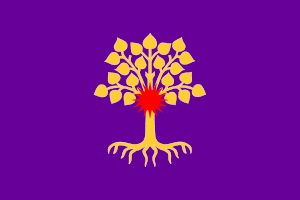
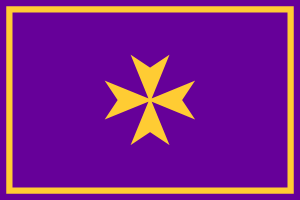
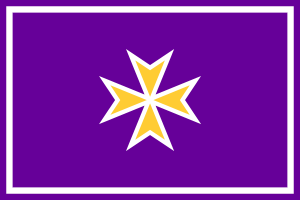
Cabinet
The Prime Minister of The Kingdom of Laurenberg is the head of government of the Kingdom who serves as the principal representative of the monarch to the government's business. The prime minister is the leader of the House of Peers to which the members are elected through a direct election or by reccomendation by the Monarch. The Prime Minister leads a Council of Ministers, which comprises of the cabinet and the other ministers and serves as a body of collective responsibility. The Monarch appoints the prime minister upon being pleased that the individual to be appointed as the Prime Minister commands a simple majority of his people in terms of the members in the parliament. The prime minister can be removed through a vote of no-confidence motion in the House of Peers or by the direct order of the Monarch. The applicants competing for the position of the Prime Minister should belong to the chivalry, and should hold a minimum rank of Baron. The Monarch, after or before election may bestow a higher rank. The tenure of a Prime Minister lasts for 2 years.
Legislature
Historically the Court, The legislature of Laurenberg is a ten-membered unicameral body referred to as the House of Peers. The House is the sole law making institution within the nation and is comprised of ten members who are elected through a direct election held every year on the expiration of the term of the parliament or earlier, if dissolved by the monarch on the advice of the government/ personal reasons. The membership of the parliament is based on proportional representation and the constituencies are divided within the states and the territories based on the population. The main purpose of the legislature is to formulate laws, budgets, bills, etc. for the progress and well-being of the people and the nation. The Prime Minister is the chief representative of the monarch and the government in the house of the legislature and is the leader of the house, and is chosen amongst the elected members of the House. The members may be directly elected or on the recommendation of the Monarch. The council of ministers is formed of elected members of the House, and any individual appointed as a minister is needed to be a member of the House. The Monarch attends the first and last session of the House. The Monarch declares the House open during every tenure of it. The tenure of the House is 2 years.
The Kingdom does not possess any formal legislature as such, with elections planned in August.
Judiciary
As the nation follows the three pillars of democracy - Executive, Legislature and Judiciary. The Judiciary stands as an independent branch of the system with Supreme Atrium of Laurenberg being the supreme judicial body of the kingdom and the highest court in the nation. It is the most senior constitutional court, and has the power of judicial review. The Grand Justitiam is the head and chief judge of the Supreme Atrium. The Monarchy holds it representatives in the Legislature and Executive, as a matter to check their powers. It does not involve itself in the Judiciary.
Administrative Divisions
The Kingdom follows the Imperial System of Administration. The Capital Region is distinguished by (-Yake), the provinces (-Ken), the County (-Kori).
The Kingdom consists of the administrative capital, Laurenberg, rarely called Laurenberg-Yake. The Royal Capital is located in The Upper Ruma (Kami-no-Ruma-no-Miyake). The Upper Ruma consists of the crown properties, which are directly under the jurisdiction of the Monarch and his councils. There exist six provinces (-Ken), each divided into two counties (-Kori).
There also exist some overseas territories, which are governed by a Governor who is elected by a the Monarch and is answerable to the Prime Minister. The Governor is the sole member of the House of Peers, representating his territory.
Military
The Armed Forces of Laurenberg are the sole military organization of the Kingdom. The nation is not a member of The Union Against Micronational Wars and may enter into wars, when there is a need to save the state and protect it's soveregnity. It comprises of three services - the Royal Laurenberg Army, the Royal Laurenberg Navy, the Royal Laurenberg Air Force.
The Armed Forces are led by the Prime Minister in his capacity as the Commander-in-chief of The Laurenberg Armed Forces. The forces are under the jurisdiction of the Ministry of Defence. The Grand Warden of the Defence is the commanding officer of the combined services and is a rank held by a general-rank officer (should belong to the chivalry, Baron or above) of any of the three services of the armed forces. The three branches of the armed forces are commanded individually by a commander, who is a three-star officer from their respective services (should belong to chivalry, Baron or above).
The State has developed it's indigenous Phosphorus-propelled Artillery (PPA) and own 5 Artillery pieces as of 2022. The states also own a Horse which is enlisted in the Army as well as for the use of the Monarch. The Army also owns 2 Helicopters, 1 Drone and 1 Aircraft Carrier. There are 5 Active Personnels, and 3 Reserve Personnels.
4. National Symbols
This article has not been added to any content categories. Please help out by adding categories to it so that it can be listed with similar articles. (July 2023) |